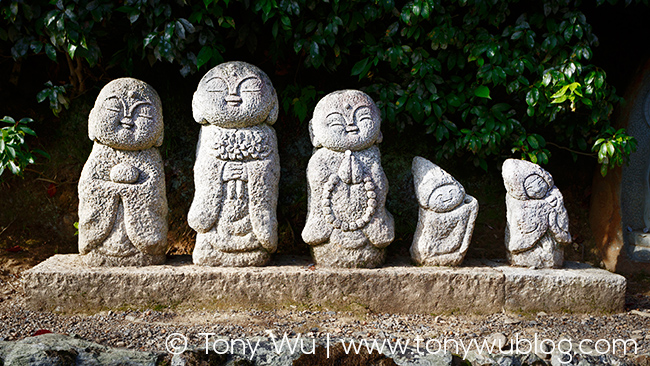Summer used to be my favourite season when I was a kid, in large part because I rarely had to wear more than shorts and a T-shirt, I spent a lot of time in the water (mostly the pool, but also the sea), got ridiculously sunburned, and almost never put on shoes.
Now that I do all of the above for work (picture big stupid grin on my face), I've become a huge fan of autumn.
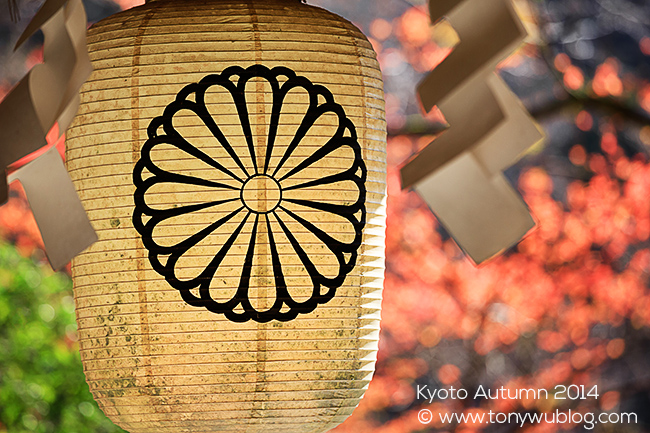
The air becomes cool, crisp, invigorating. The quality of light is often beautiful beyond words. Fresh food, from both land and sea, is just incredible. And the foliage. The turning of colours marks the passage of time. The season gives pause for reflection; provides a backdrop for contemplation.
I haven't had much time in recent years to enjoy the visual delights of autumn. I've been preoccupied with travel and sitting in front of a computer.
Last week though, I was fortunate enough to visit Kyoto for a few days, my first visit to that city in at least two decades.
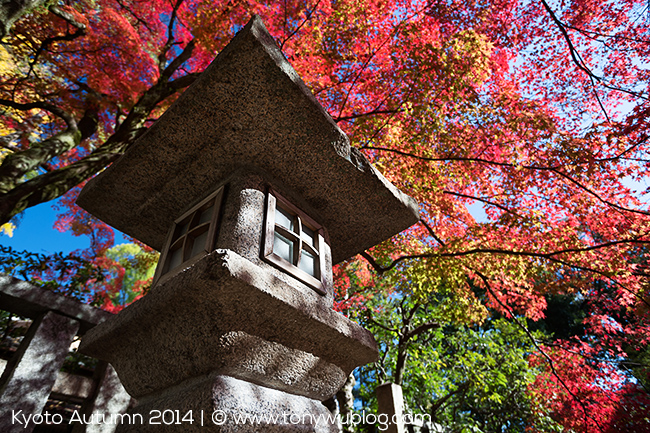
It was peak tourist season—busloads of loud, selfie-stick wielding travellers from around the globe unloading at every major tourist site. To avoid getting entangled in a gaggle of gawking sightseers, we sought out less-frequented areas, places not necessarily on the typical must-do checklists, and also endeavoured to avoid peak hours. We set out each day on a quest for pockets of underappreciated beauty, sometimes in remote places, but often right in the middle of the action, just steps away from where group tours squabbled for space.
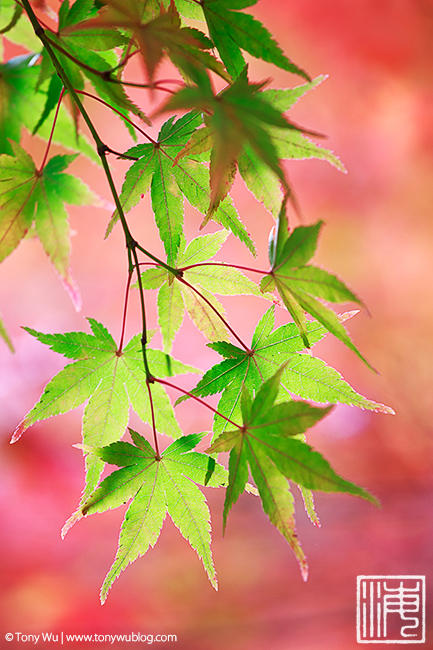
My favorite leaves are those of the many varieties of Japanese maple trees, known as momiji (紅葉). Literally translated, the Japanese characters mean red leaf, probably because the delicate leaves have a tendency to turn various shades of deep red in the autumn. The same characters also happen to be the ones used for the Japanese term that refers to the changing of foliage colour in the autumn, which should provide a reference for how important and representative momiji leaves are to the fall season in Japan.
As you'll see in the photos in this post though, momiji leaves can take on an entire gamut of hues, making for spectacular displays of colour.
My other favourite leaves are those of the ginkgo tree, a plant that is arguably a living fossil, having first appeared in the fossil record some 250 million years ago. Ginkgo trees also have gender. So any given tree is either male or female, which means it takes at least two to tango. Ginkgo nuts, the gametophytes of this fascinating plant, feature in some cuisine in Japan too. They are delicious in small quantities.
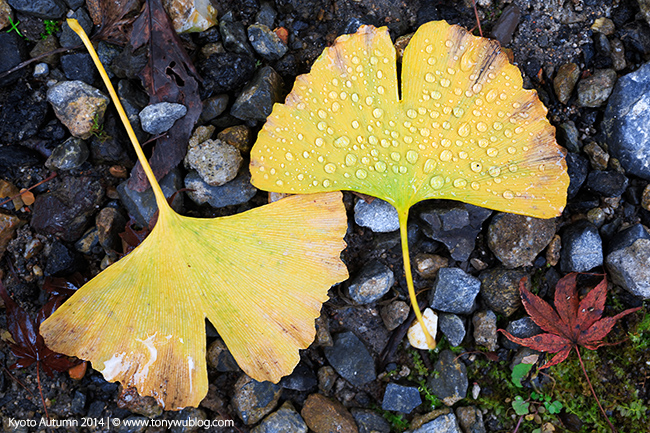
Anyway, my few days of R&R are over now. It's time to get back to work on preparing humpback whale photos for my upcoming presentations.
I've been going through archives and pulling up lots of images I've not looked at for years, and in some cases, never shared before. Putting together compelling presentations is a lot of hard work. Ugh. But the end product is always worth the pain. If only I could offload the painful part to someone else!
To wrap up, below are a few more photos from the trip, so you can see how stunning the scenery was. If you want to check out even more, I've uploaded additional images to my Photoshelter archive.
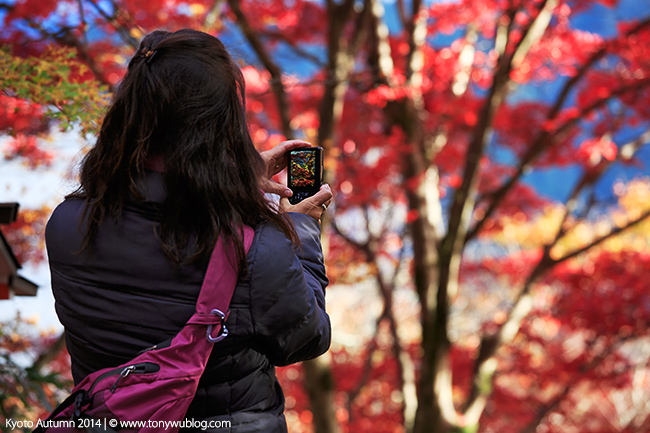
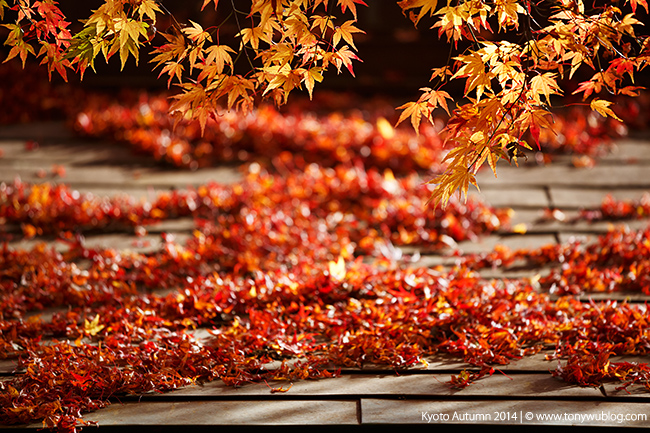
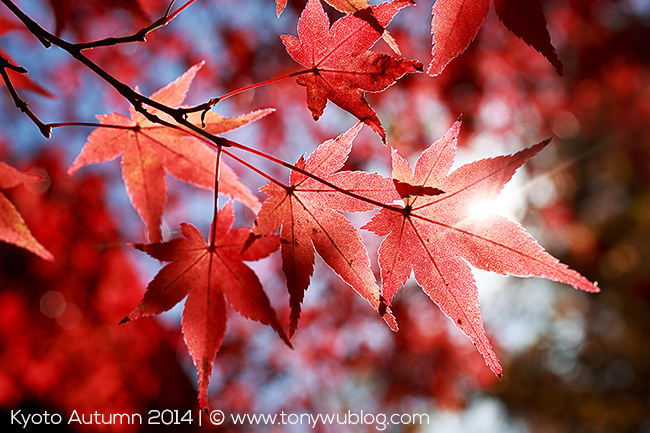
Oh...lest you think I was being too serious while I was in Kyoto, this snapshot should provide some reassurance that all was normal.
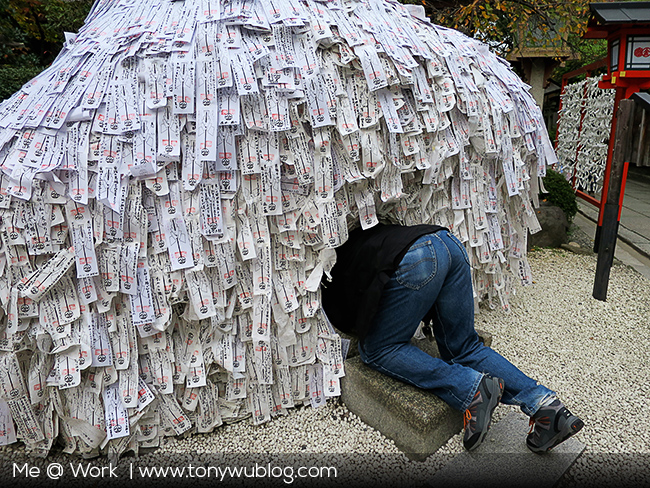
Crawling through the hole was supposed to bring me luck, good fortune, all my hopes and dreams, etc. Besides, doing so gave me the opportunity to have this unique portrait taken, which was worth the time, if for no other purpose than to provide some comic relief for even the most stone-faced of locals.
